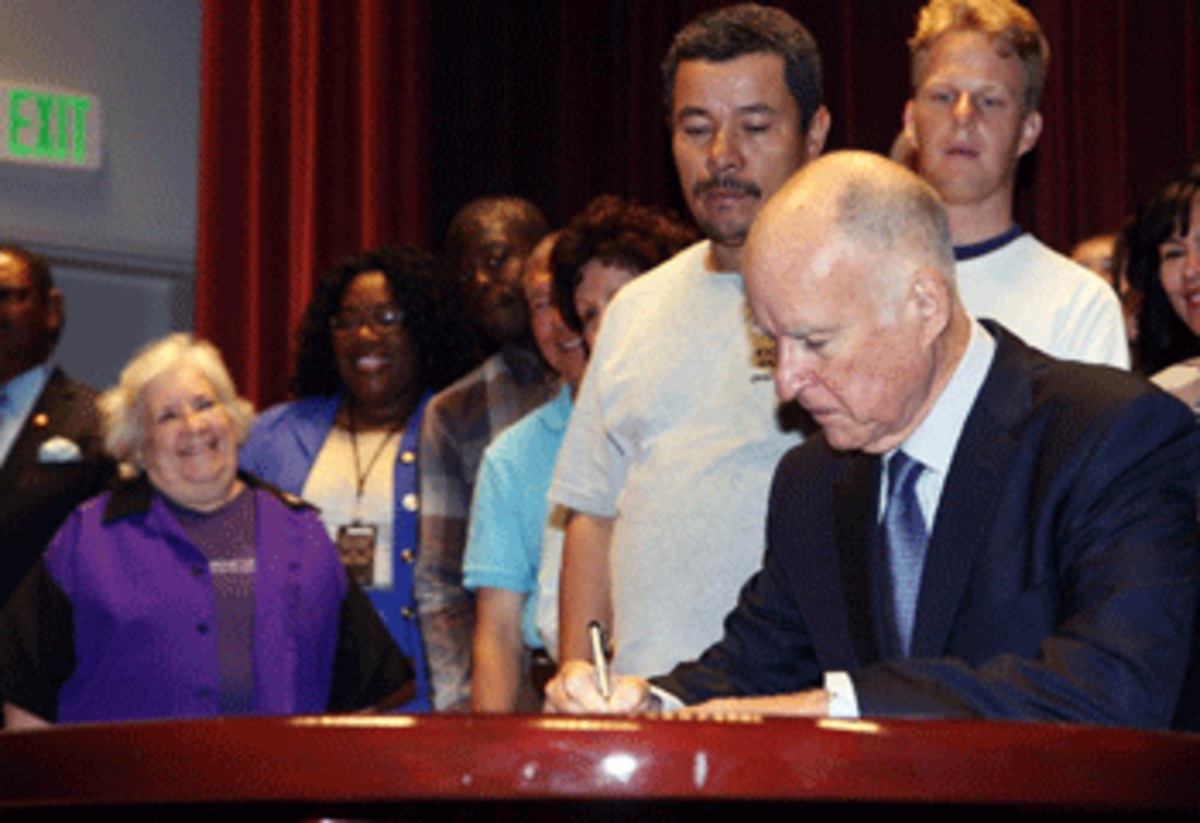September 27, 2013
|
Unknown to much of the public, Wall Street has been soaking state and municipal coffers with derivatives schemes and various frauds for years. As Alexander Arapoglou and Jerri-Lynn Scofield have explained, not only have Wall Street banks screwed public finances with fancy credit default swaps and other "innovative" financial products that blow up in the faces of cities and states, they have also been engaged in widespread frauds that squeeze pension yields. This happened in the LIBOR rate-rigging scandal, in which big banks were found to be manipulating interest rates, which has resulted in lower returns on pension fund investments and has caused shortfalls in pension plans.
The lack of actions from authorities means this kind of hustling will surely continue.
Rolling Stone’s Matt Taibbi has just published an article outlining how this gigantic heist is going down. While Wall Street has been on its scam-a-licious rampage, no-good politicians have been taking taxpayer money meant for pensions and spending it on whatever they wanted, depleting funds. (This is actually securities fraud, but the nearly toothless SEC has barely lifted a finger to address it.) Even so, pensions were still in fairly decent shape when the crash of 2008 came and wrecked budgets across America. The Wall Street-driven financial crisis crushed state and local revenues, and the financiers decided this was the perfect moment to dive in for yet another helping of public money by seizing control of public pensions.
In Taibbi’s colorful words: “This is the third act in an improbable triple-fucking of ordinary people that Wall Street is seeking to pull off as a shocker epilogue to the crisis era.”
Wall Street has plenty of politicians in its pockets to grease the wheels. Taibbi hones in on the notorious example of Rhode Island treasurer Gina Raimondo, a former venture capitalist who made the war against pensions her raison d’etre and handed over a billion in pension funds to hedge funds that could charge the strapped state boatloads of hidden fees to manage them. Firms like Goldman Sachs and Bain Capital, along with predators like billionaire John Arnolds, formerly of Enron, are overwhelmed with joy and have filled Raimondo’s coffers for a 2014 gubernatorial run. They know a good thing when they see it.
Wall Street’s PR message? The country’s financial woes were the fault of hard-working elementary school teachers and cops. It’s an audacious, shockingly cynical lie, but with enough money thrown behind it, the lie has spread like a cancer through the media and the political world. Rapacious bankers have successfully pitted private sector workers who have been losing their pensions against public sector folks who were still hanging on to theirs—a tried and true divide-and-conquer tactic that means big money for criminal banksters.
The villains who have helped spread this lie include the folks at Pew Charitable Trusts, an organization known for its centrism and number-crunching. Starting in 2007, Pew started rolling out studies suggesting that pensions were unsustainable, and found an eager accomplice in the form of noxious billionaire John Arnold, a right-winger and former Enron commodities trader who, as Taibbi reports, was “helping himself to an $8 million bonus while the company's pension fund was vaporizing.”
![Manchester earlier today... Surely this is worth more than a quick mention in the lamestream media. Viva la Revolución!
50,000+ people marched in a union protest against austerity cuts and NHS changes during the Conservative Party conference in Manchester. "Authorities" claim it was one of the largest protests in recent history.
Frances O'Grady, TUC general secretary, said: "Austerity is having a devastating effect on our communities and services, with 21,000 NHS jobs lost over the last three months alone.
"The NHS is one of Britain's finest achievements and we will not allow ministers to destroy, through cuts and privatisation, what has taken generations to build."
[Article] "More than 50,000 people have taken part in a protest to ‘save the NHS’ in Manchester, a stone’s throw away from the Conservative Party conference.
Meanwhile, a BBC journalist claimed he was stopped from filming the demonstration by security guards at the conference centre.
Norman Smith, the BBC’s political correspondent, said security staff had been told by police not to allow access to a balcony overlooking the protest, but no reason was given.
Greater Manchester Police said it was one of the largest protests it had ever handled. At one point, the demonstration snaking through the city centre was more than a mile long."
Source: http://metro.co.uk/2013/09/29/50000-rally-outside-tory-conference-amid-censorship-row-4127508/
Found on @[124978350989069:274:Revolution News]
@oe](https://scontent-a-sjc.xx.fbcdn.net/hphotos-prn2/p240x240/7910_668117366534384_1326988042_n.jpg)


